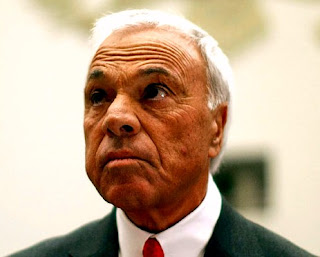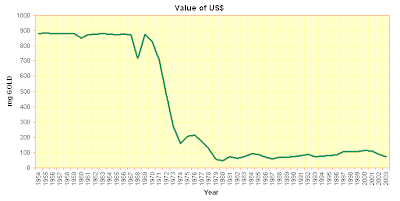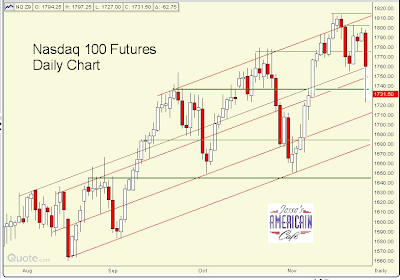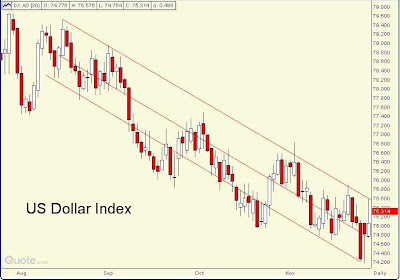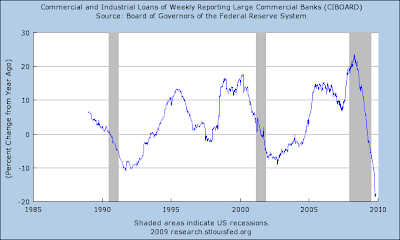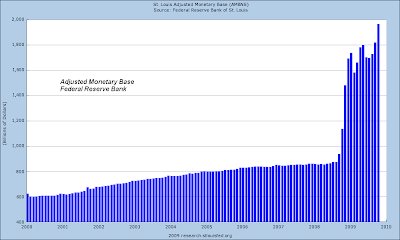"Sanford Bernstein analyst Todd Bault said AIG is facing an $11 billion shortfall to cover potential claims in its property and casualty insurance business, according to media reports Monday."
The public has been reassured repeatedly that AIG's troubles with exotic financial instruments written by its London division at the behest of some of the Wall Street banks could not affect its personal and commercial insurance business which is regulated by the states.
We have raised the issue in the past that corporations such as AIG, with its exposure to individual and small business insurance claims and annuities, have no business engaging in raw financial speculation with a commingling of liabilities and risks. At one time AIG was a major speculator in the silver markets, holding enormous short positions along with a few of the Wall Street commercial banks.
Banks and insurance companies have absolutely no business engaging in financial speculation that exposes its non-qualified investors and depositors to risk of loss that has not been fully disclosed. It is the job of the government regulators to prevent this from happening in the first place as part of the corporate licensing process. Period.
We freely admit that we do not understand the exact structure of AIG's interwoven obligations and corporate structure, who owes what, what is safe and what is not. It is not clear to us who does understand it, except to say that it is a massive conglomerate, and that there are investments and speculations and commercial enterprises that have absolutely no business being in the same portfolio as others from a risk profile. The same goes for the money center banks. These companies look more like pyramid schemes serving their management to the detriment of shareholders and customers.
AIG ought to have been broken up and taken through a restructuring process, and the commercial business fully capitalized and separated from its speculative operations first, before anyone was paid with government funds, including enormous employee bonuses and full payments to counterparties in financial speculation like Goldman Sachs.
If the financial insiders were paid, and individuals are left high and dry on car and life insurance and retirment annuities, there will be hell to pay, of this we are certain.
AP
AIG shares decline amid reports of shortfall in insurance reserves
Monday November 30, 2009
NEW YORK (AP) -- Shares of American International Group Inc. tumbled nearly 15 percent Monday after an analyst stirred concerns that the troubled insurer doesn't have enough reserves to pay some potential claims.
AIG shares dropped $4.90, or 14.7 percent, to finish at $28.40 -- their lowest close since August 19. The shares have more than quadrupled from a low of $6.60 in March.
Sanford Bernstein analyst Todd Bault said AIG is facing an $11 billion shortfall to cover potential claims in its property and casualty insurance business, according to media reports Monday. Bault declined to share the research note.
Covering that shortfall could cause problems for the New York-based insurer as it tries to repay a government bailout package it received to help stay in business.
Separately, the Financial Times reported AIG may soon get a bid for a part of its aircraft leasing unit from a group that includes the head of that business.
A spokeswoman for AIG, which is based in New York, declined to comment on either report...
NY Times
Report Cites Big Shortfall In Reserves At A.I.G.
By MARY WILLIAMS WALSH
November 30, 2009
An independent analysis of whether the insurance industry has been setting aside enough money to pay its claims estimates that the American International Group has a shortfall of $11.9 billion in its property and casualty business.
The conclusion is at odds with the often-repeated refrain that A.I.G.’s troubles can all be traced to its derivatives portfolio, and that its insurance operations are sound.
Other researchers have raised doubts about A.I.G.’s total worth since it was bailed out last year, and even the federal government has acknowledged that the company might have difficulty repaying all the money it owed taxpayers, currently about $120 billion.
In a report distributed to clients on Monday, the investment research firm Sanford C. Bernstein pointed to a big shortfall in A.I.G.’s property and casualty insurance business — which has been renamed Chartis and is intended to be the future core of the company’s operations.
The stock fell by almost 15 percent, to $28.40 from $33.30, in trading on Monday. Bernstein cut A.I.G.’s price target by 40 percent, to $12 from $20. The report’s author, Todd R. Bault, called the results “a big surprise.” He also said the inadequacy of A.I.G.’s reserves had grown in recent years — “nearly the opposite behavior that we would expect,” since the claims-paying reserves of other insurance companies had been growing...
Customers Frequently Asked Questions
1. Is my insurance policy safe?
Yes, your insurance policy is safe. Our insurance companies remain strong and well-capitalized. Regulations ensure that the assets of our insurance companies are there to back up each policy. You are protected. Your policy is safe.
2. If I have a claim, will it be paid?
Yes, our insurance companies are able to pay all valid claims. As stated above, our insurance companies are financially strong and are not in jeopardy.
3. Should I cancel my insurance policy?
Your insurance policy is safe. As stated above, our insurance companies are financially strong so your policies are not in jeopardy. Please be aware that some policies may contain surrender charges and/or cancellation penalties. Talk to your financial advisor before making any decision.
4. Should I get out of my annuity?
Your annuity is underwritten by one of the AIG insurance companies. Our insurance companies are financially sound and well-capitalized. Please be aware that some annuities may contain surrender charges. Talk to your financial advisor before making any decision.
5. I just heard that AIG is selling the company that issued my insurance policy. What should I do?
You don't have to do anything. Your policy remains safe and intact. Your policy will be seamlessly transferred to the company that buys the subsidiary.
6. Should I pay the insurance premium bill I just received?
Yes, in order for your coverage with us to continue, you will need to pay the insurance premium.



